Snowshoeing on your favorite summer hiking trails is a super workout and one of the best ways to enjoy winter.
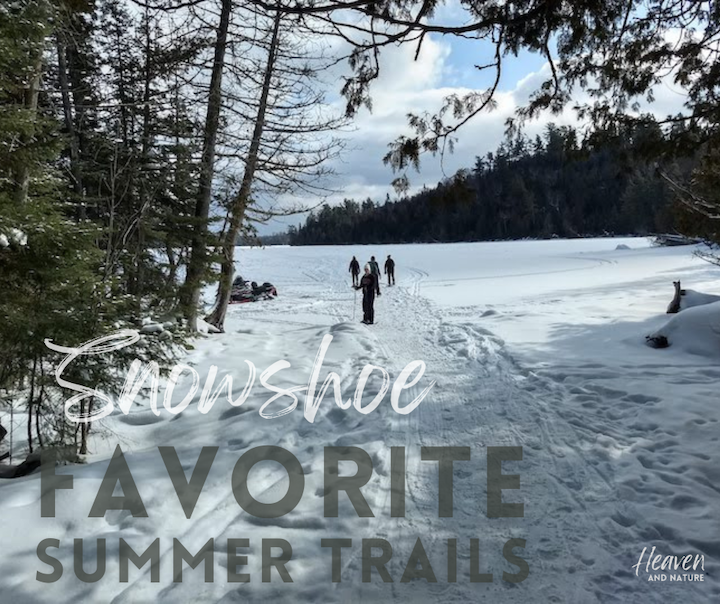
Chances are your favorite summer hiking trail in the northern or in the mountains would also make a great snowshoe trail.
In fact, the popular ones are probably well-traveled in the winter, too, both by winter hikers and snowshoers.
Here are some things to keep in mind:
Off-Trail or On-Trail?
Here in Minnesota there’s a big difference in snow cover across the state. Depending on the winter, we may or may not have enough to snowshoe on in many parts of the state. But there’s one area we always know will have snow: up in the Arrowhead.
(Take a look at this average snowfall map from the DNR to see what I mean)
If we try to snowshoe off-trail up where they get tons of snow each year, we’re in up to our knees or deeper, even with snowshoes on.
It’s too much work! So we stay on-trail in deep snow.
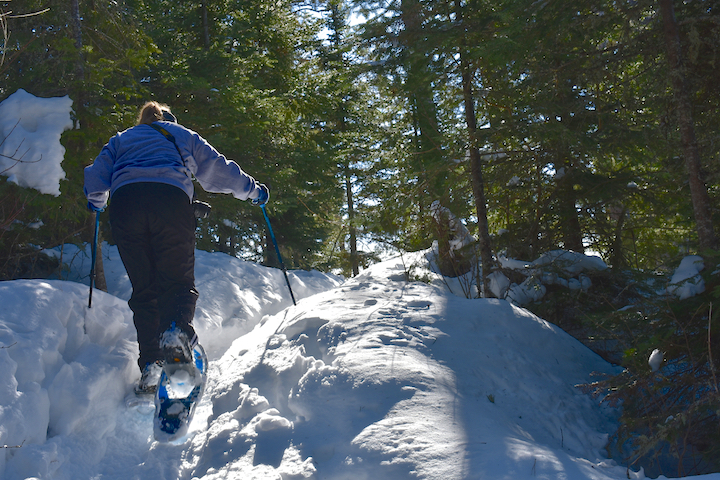
An exception to that are some of the frozen lakes. The wind often keeps the snow from accumulating too deeply, so off-trail on the lakes has worked fine for us.
If it’s windy, though, think twice. Wind you won’t feel in the woods is wind you’ll feel full-force out on an open lake!
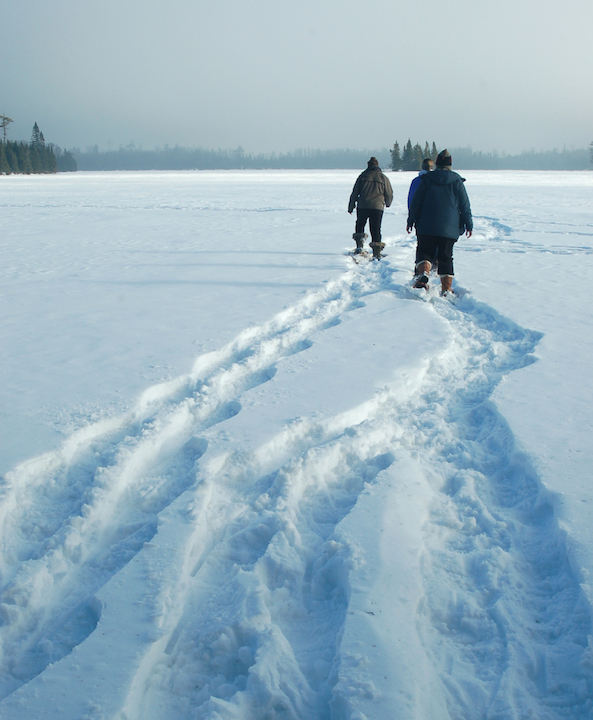
If you’re snow that’s just a foot deep or less, off-trail is just fine.
Advantages of Snowshoeing Hiking Trails in the Winter
Yes, it’s cold. But there are lots of advantages to snowshoeing the summer trails:
NO BUGS! I don’t know about where you live, but in Minnesota we have a lot of them. It’s glorious being in the woods amidst all the beauty without the biting critters.
HARDLY ANY PEOPLE. On trails with dozens or scores of visitors during the summer and fall, we might see a couple, or at most a handful of folks during the winter. (There seems to be enough traffic to keep the trails open, though, which is nice!)
LOTS OF ANIMAL TRACKS. This is one of my favorite things—to see all the animal tracks in the woods criss-crossing the trails. We all share the same space! They’re fun to see and try to identify.
SERENITY AND QUIET. There are a few cold-weather birds that stick around, but many of the song birds have left for the winter. Less traffic, fewer people and lots of quiet in the winter. Sometimes even the waterfalls are frozen.
CLEAR VIEWS THROUGH THE WOODS. With no leaves on the trees there’s plenty to see.
WINTRY BEAUTY. Winter has its own kind of beauty, especially after a recent snowfall. If you live in the south and have never been in a winter wooded landscape, you need to be in one once in your life! It truly is a wonderland.
A DIFFERENT TRAIL EXPERIENCE. In the photo at the very top of this post, we were snowshoeing on a Boundary Waters canoe route. Walking across the lakes instead of paddling them is definitely a different and very cool experience!
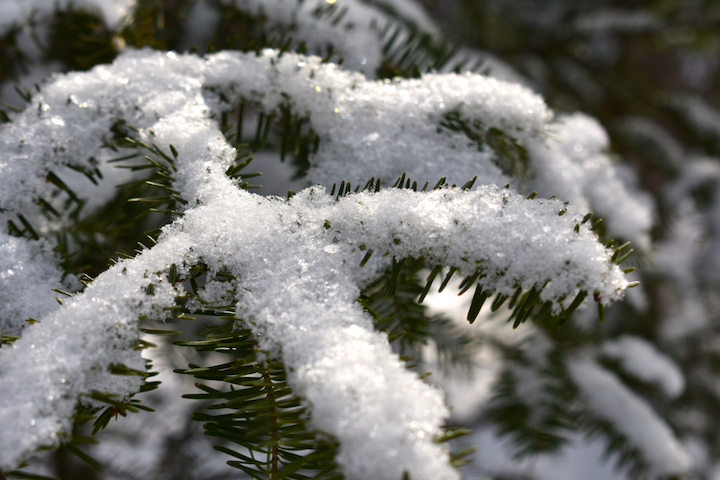
Does It Matter What Kind of Snowshoes to Use?
As snowshoeing gains popularity, you’ll find more parks and retailers are renting snowshoes.
If you like hiking and like snow, you’ll love snowshoeing! It’s worth investing in your own pair. You’ll be much more free to go wherever you like, whenever you like.
The old fashioned wood snowshoes with the webbing are the best for lots of deep snow—but they’re tricky on narrow trails through the woods and on hills.
Modern snowshoes are less cumbersome and have metal crampons that help up on ice and hills.
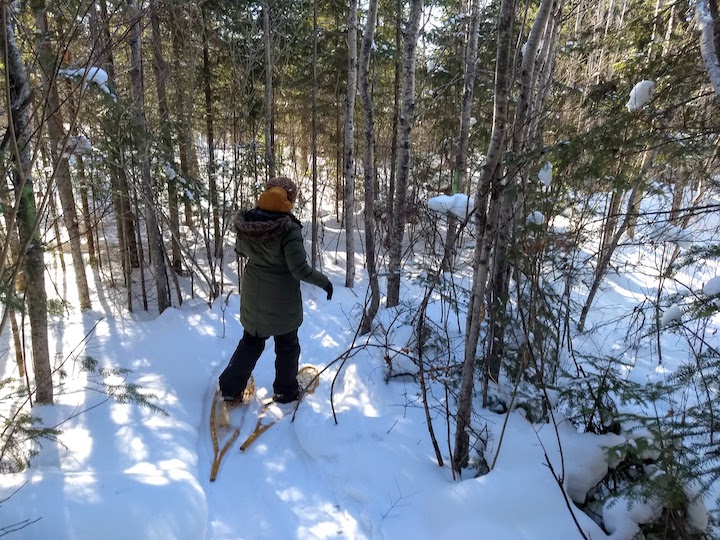
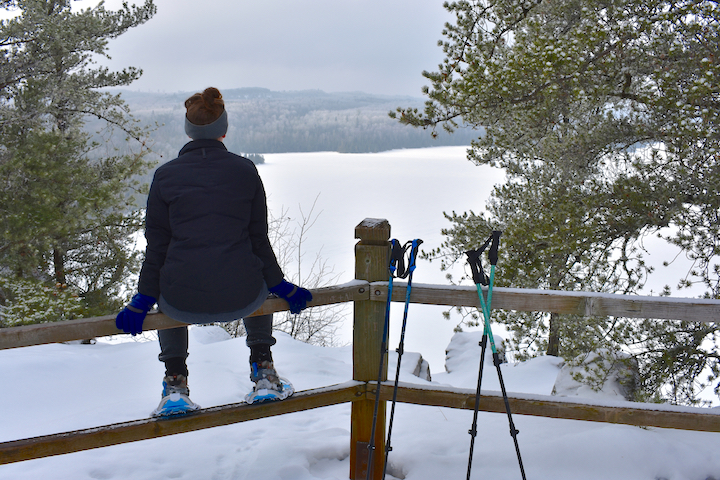
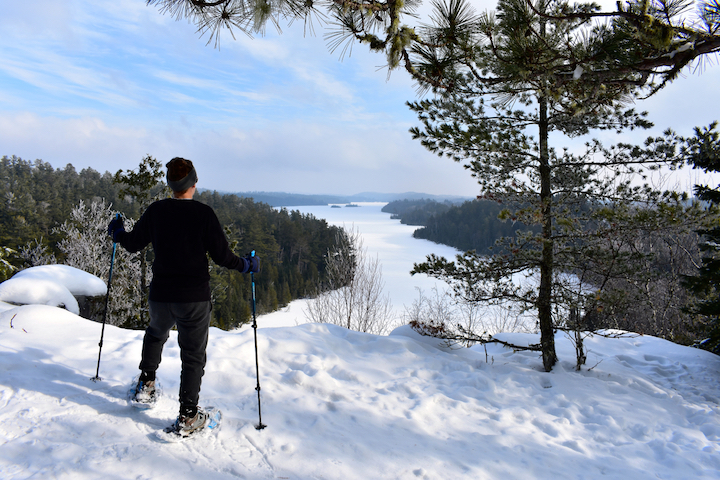
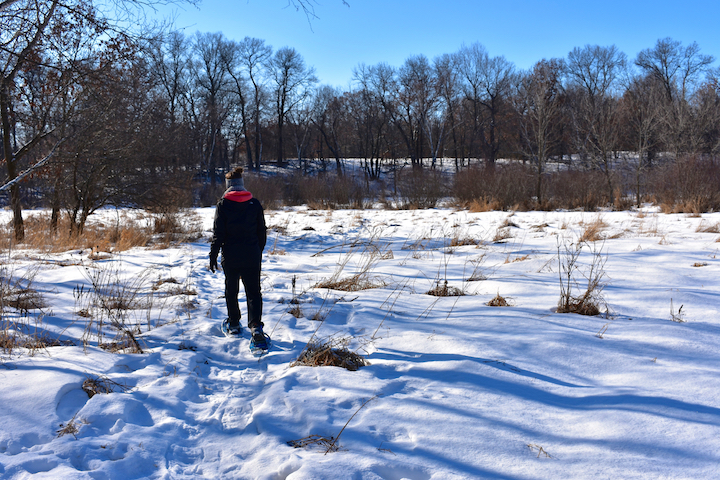
About Snow Conditions
Even though temps in the 30s may be more pleasant overall for getting out on the trails, packable snow is terrible for snowshoeing!
One winter the warming snow kept packing into ice balls in our crampons, making it almost impossible to keep walking without constantly pausing to scrape them off.
If the forecast is for 30s and up, get out early before the sun has a chance to warm up the snow! You’ll have better, drier snow conditions if the temps are colder.
I hope this has inspired you to get out there and snowshoe! If you don’t live in a northern climate, think about heading north or to the mountains for awhile in the winter.
Snowshoeing is a great way to enjoy the snow that requires no special skills. Just a sense of adventure!
Here’s more…
- What the Bible Says about Nature and Creation
- A Multi-Generational Women’s Outdoor Retreat? Yes, Please!
- Who’s Your Trail Guide through Life?
- Water and Its Importance in the Bible - August 27, 2024
- How God Speaks through Signs in the Heavens - June 14, 2024
- 20 Meaningful Bible Verses about Nature - March 18, 2024

